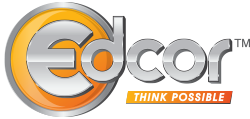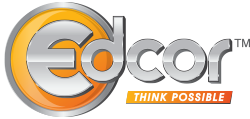It’s been more than two years since the healthcare system, not only in the US but all around the world, has been challenged, overwhelmed, and overcome by Covid-19 and its many variants. Our frontline healthcare workers have absorbed the stress of this pandemic all along and supported our loved ones when we weren’t even allowed near them. They are the ones who have witnessed the desperation to breathe, and the lonely last breaths. The toll of the pandemic has been overbearing both physically and mentally.
The crisis has not only challenged but also unmasked the many systemic issues in the healthcare systems that are now being addressed slowly. The major ones are Nurse Overwork and Nurse Shortage. The worker exodus from the Healthcare industry was unlike any other industry during the past two years, giving the industry a much-required jolt. Pay raises, flexibility, and a lesser number of hours per week clearly didn’t work enough. Healthcare professionals were looking for more. Most healthcare brands responded to the need with big multi-year investments in Education benefits like Tuition Assistance, Student Loan Repayment Assistance, and Scholarships. These, with other benefits, seem to have stabilized the attrition in the industry.
Sure, there are short-term perks and benefits that make healthcare professionals get some much needed R&R. However, for the wellness benefits to be ever-lasting give them the Gift of Education benefits this Nurses week.
How do Education benefits help, you ask?
Education benefits have historically been used as strategic tools for recruitment and retention as they address the aspirational, financial, and engagement needs of the workforce.
These benefits help the workforce upskill while keeping them engaged and ensure a better financial future for all parties. Experts indicate that the best way to stabilize your business is to stop the trickle and concentrate on retention first. Do not overlook the employees who stay, and optimally engage them and invest in their growth. The cost of disengaged employees comes up to 18% of annual salary. Moreover, the American Upskilling study shows that two-thirds of workers opine that employer-provided upskilling or education benefits are “very” or “extremely” important in joining a new company or staying in the current job.
Tuition Reimbursement or Assistance is the most widely used Education benefit because these benefits significantly reduce training and hiring costs due to internal mobility of the talent pool, along with building a leadership pipeline resulting in a high ROI. They lead to highly motivated and engaged employees who spend time and efforts on career growth within the organization furthering the workforce productivity metrics. Moreover, the cap of $5250 is tax-free for both the employee and the employer generating yet another win-win equation.
The overwhelming data on Student debts, the importance of employee financial wellness, coupled with the ongoing worker shortage are compelling reasons to include Student Loan Assistance as a benefit to attract and retain talent. Company contributions towards employee student loans help shave off years in repayments and save interest dollars for the beneficiaries. Usually, the contributions are capped to a lifetime maximum and there’s a before and after employment length clause for eligibility. As a result, the benefit serves as both an effective talent attraction and retention strategy.
More and more employers, especially in the Healthcare industry, are now offering one-time or renewable Scholarships in conjunction with Educational benefits to employees and their dependents. Employer Scholarships help reduce the ticket price of the ever-increasing college degrees and are a great way to show that you care. The best practice around scholarships is to administer them through third-party benefit providers to alleviate bias and promote inclusiveness.
Here’s how to promote wellness and enhance retention through your Education benefits:
- Review your education benefits policy to evaluate what you offer and when, and link it with your retention strategy. For Example,
- Are these benefits available for Part-Time or Full-Time employees or both?
- Are they available on Hire or after a certain period of employment?
- You may want to increase the annual benefit limit/cap to say $10,000 for hard to recruit/retain employees with high-demand majors and degrees for particular job titles. For example, offer a higher cap for an RN or Medical Services Manager in health care since those are valuable positions involving high recruitment and training costs.
- Evaluate what percentage of your diverse workforce is utilizing these benefits. Higher degrees will result in better career and financial opportunities in the long term for them.
- Plan an outreach if there’s low utilization to highlight the growth culture you intend to build.
- Gaze if your Educational benefits tie in with your organization’s L&D goals,
- Outline career paths and high-demand skills for old and new hires.
- Include short-term upskilling courses like Certificates and Certifications under the Tuition Policy to cover the entire spectrum.
A better future is something that we all aspire and work for. A future that is full of opportunities and growth. A future that is financially stable. A future that is a culmination of life-long dreams.
Be an enabler. This Nurses week gift your frontline ‘a better future’ with the help of Education benefits.

Edcor is a woman-owned business and is the benchmark in education benefits administration. For 40 years, our customized service and solutions have allowed Fortune 500 Clients to use education benefits programs for employee recruiting, retention, and development. Please feel free to reach out to us!
Spardha Khera, Edcor



